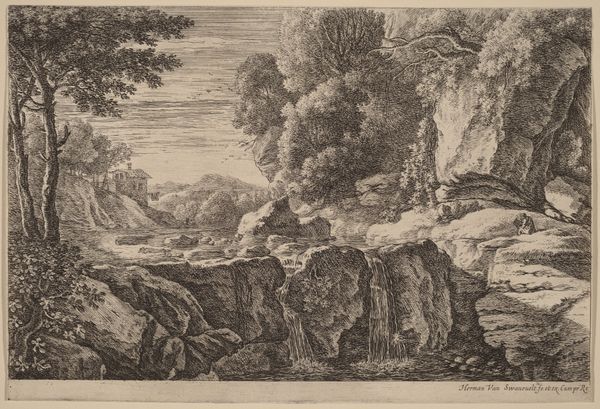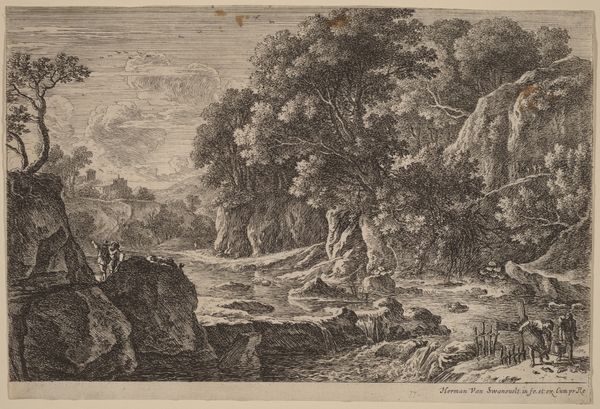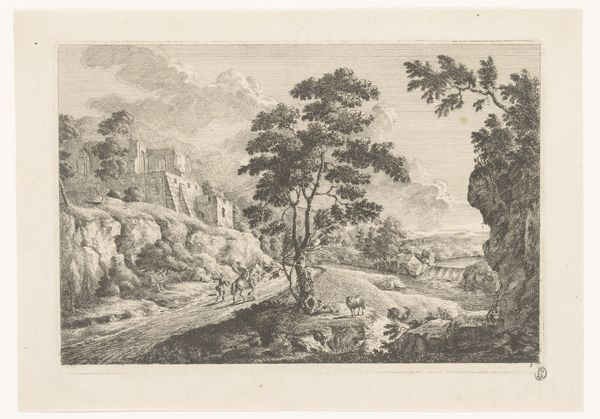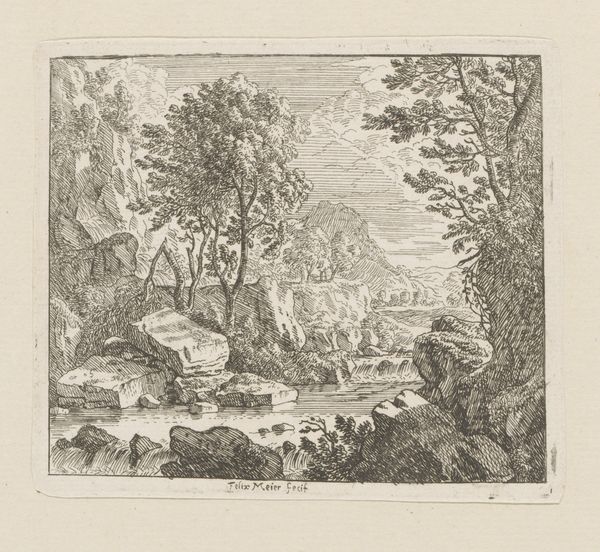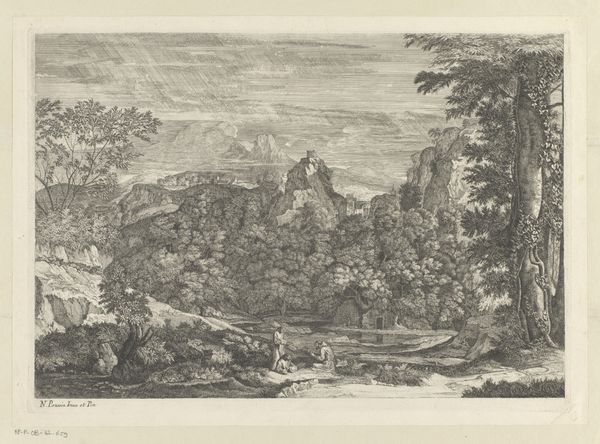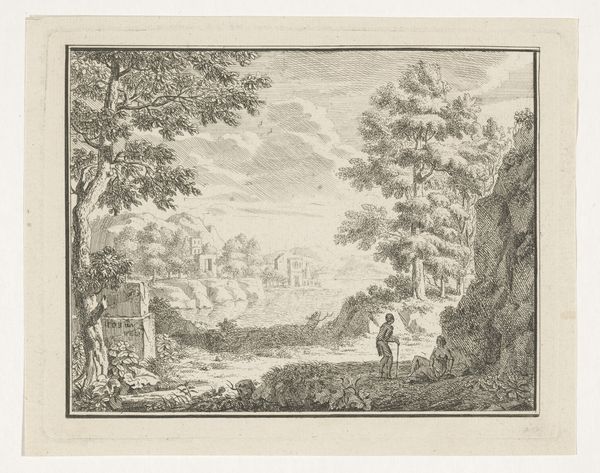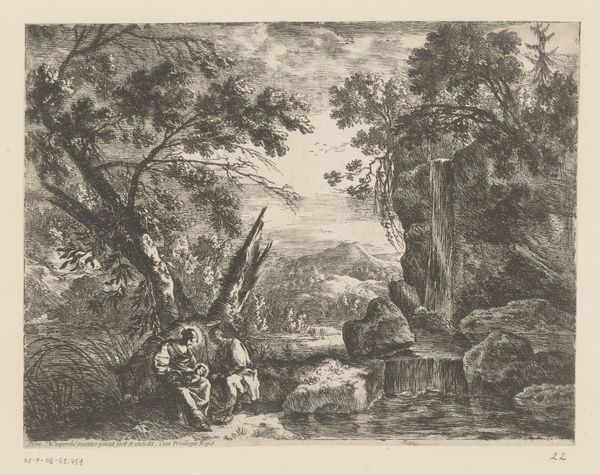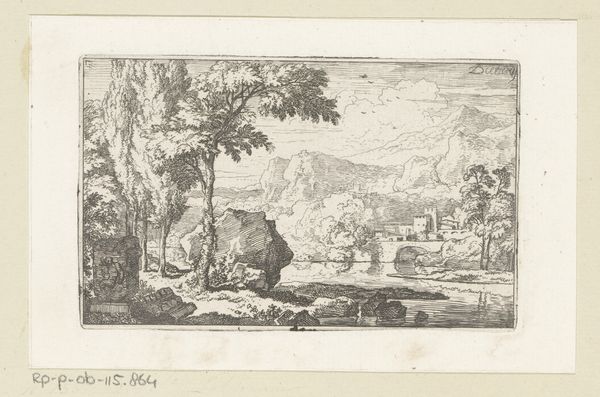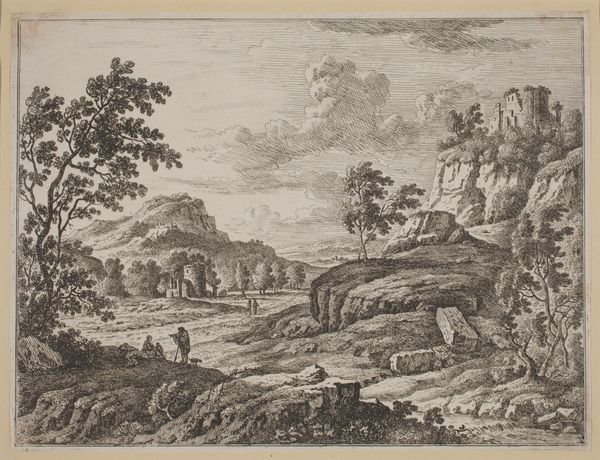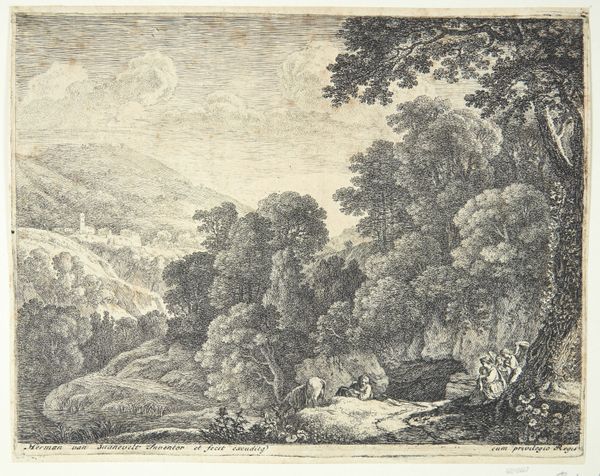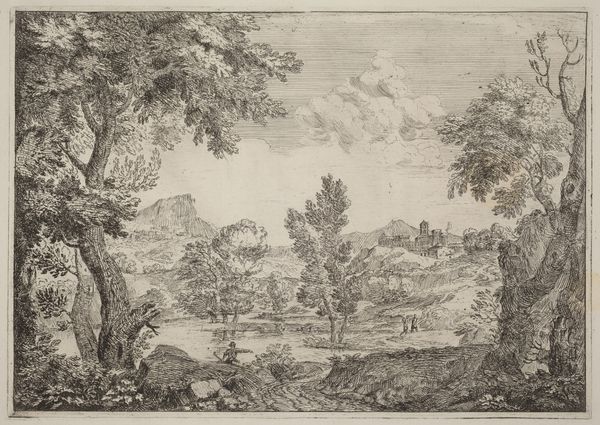
print, etching, engraving
# print
#
etching
#
landscape
#
etching
#
engraving
Dimensions: height 183 mm, width 238 mm
Copyright: Rijks Museum: Open Domain
Editor: So, this is *Landschap met watervallen*, a landscape by Felix Meyer, probably made between 1663 and 1713. It's a print, an etching, with possibly some engraving. It feels both idyllic and a little…chaotic, almost claustrophobic. What are your thoughts when you look at this piece? Curator: I see a really interesting tension, which echoes so much of the period's socio-political upheaval. Meyer's idealized landscape exists within the context of immense societal changes. Think about the burgeoning mercantile class and their appropriation of nature. Does this idealized landscape reflect a societal longing for stability, a counterpoint to rapid urbanization and shifting power structures? Editor: That's fascinating. I hadn't considered that. I was just focused on the, like, picturesque waterfall. So you're saying it might not just be a pretty scene? Curator: Exactly. The very act of portraying this landscape could be a statement. Who is this landscape for? Is it accessible to everyone, or is it a visual representation of ownership and privilege during an era defined by inequality? Consider how landscapes often functioned as assertions of territorial control. What do you see happening in the contrast between light and shadow here? Editor: Well, the light definitely highlights the waterfall and the open space in the middle, but the dark areas feel denser, maybe even a bit threatening. Curator: Precisely! That use of light and shadow isn't just aesthetic. It could be interpreted as a visual metaphor for the known and unknown, the controlled and the wild, mirroring the era's anxieties surrounding the changing world. These weren’t neutral depictions. The social constructs were loaded into these images. Editor: Wow. I’ll never look at a landscape the same way again. Thank you, this has really changed how I approach thinking about art. Curator: Absolutely. That's the beauty of looking at art through an intersectional lens – it allows us to unearth the hidden narratives and power dynamics embedded within the artwork.
Comments
No comments
Be the first to comment and join the conversation on the ultimate creative platform.
